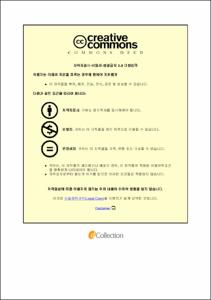비뇨기과 수술 후 폐 합병증에 대한 새로운 예측 인자: 예후 영양 지수와 횡경막 두께 분율
- Abstract
- Background: Radical cystectomy is a major and long-time abdominal surgery that frequently leads to postoperative pulmonary complications. Robot-assisted laparoscopic prostatectomy requires particular surgical conditions, such as carbon dioxide pneumoperitoneum and steep Trendelenburg positioning, which may have adverse effects on the respiratory system. Furthermore, most patients undergoing urologic surgery are elderly patients with lower lung compliance and pulmonary function. However, little is known about the predictive ability of clinically available indices for postoperative pulmonary complications in patients who undergo urologic surgery. This study aimed to evaluate the predictive ability of clinically available indices such as the prognostic nutritional index and diaphragm thickening fraction for postoperative pulmonary complications in urologic surgery.
PART 1
Purpose: We evaluated the impact of preoperative prognostic nutritional index on postoperative pulmonary complications in radical cystectomy. The prognostic nutritional index allows for routine and easy assessment of patients’ nutritional status and may predict postoperative complications and outcomes in cancer patients.
Methods: Patients who underwent radical cystectomy between January 2007 and February 2019 were retrospectively reviewed and included in the analysis. The prognostic nutritional index was calculated as 10 × (serum albumin) + 0.005 × (total lymphocyte count). The postoperative pulmonary complications were determined if any of the following occurred within seven days of radical cystectomy: atelectasis, pleural effusion, pneumothorax, bronchospasm, respiratory infection, respiratory failure, or aspiration pneumonitis. The risk factors for postoperative pulmonary complications were evaluated using multivariate logistic regression analysis. A receiver operating characteristic curve analysis of prognostic nutritional index was performed, and an optimal cut-off value was identified. Propensity score-matched analysis was used to determine the impact of prognostic nutritional index on postoperative pulmonary complications. Postoperative outcomes such as included intensive care unit admission rate, prolonged (more than two days) intensive care unit stay, and hospital stay duration (number of days from surgery to discharge) were also evaluated.
Results: Postoperative pulmonary complications occurred in 112 (13.6%) of 822 patients. Multivariate logistic regression analysis identified prognostic nutritional index, age, and serum creatinine level as risk factors. The area under the receiver operating characteristic curve of prognostic nutritional index for predicting postoperative pulmonary complications was 0.714 (optimal cut-off value: 45). After propensity score matching, the incidence of postoperative pulmonary complications in the prognostic nutritional index ≤45 group was significantly higher compared with the prognostic nutritional index >45 group (20.8% vs. 6.8%, p <0.001), and prognostic nutritional index ≤45 was associated with a higher incidence of postoperative pulmonary complications in radical cystectomy (odds ratio = 3.308, 95% confidence interval [1.779–6.151], p <0.001). The rates of intensive care unit admission and prolonged (>2 days) stay thereof were higher in patients who developed postoperative pulmonary complications.
Conclusions: Preoperative prognostic nutritional index ≤45 was associated with a higher incidence of postoperative pulmonary complications in radical cystectomy. This result suggests that preoperative prognostic nutritional index provides useful information about pulmonary complications after radical cystectomy.
PART 2
Purpose: We evaluated the effect of diaphragm thickening fraction on the occurrence of postoperative pulmonary complications in robot-assisted laparoscopic prostatectomy.
Methods: We measured the preoperative thickness of the diaphragm at peak inspiration (Tpi) and end expiration (Tee) using ultrasonography. Diaphragm thickening fraction was calculated as thickening fraction = (Tpi–Tee)/Tee. A receiver operating characteristic curve analysis of thickening fraction was performed. After dividing patients into two groups according to the optimal thickening fraction cut-off value, we compared the occurrence of postoperative pulmonary complications between the groups. The predictivity of diaphragm thickening fraction for the occurrence of postoperative pulmonary complications was evaluated.
Results: Of 145 patients, 40 patients (27.6%) developed postoperative pulmonary complications. Patients with postoperative pulmonary complications had a significantly lower thickening fraction than those without postoperative pulmonary complications in robot-assisted laparoscopic prostatectomy (0.31 ± 0.09 vs. 0.39 ± 0.11, p <0.001). In receiver operating characteristic curve analysis, the optimal cut-off value was 0.28. The patients were divided into thickening fraction ≥0.28 group (n = 114) and thickening fraction <0.28 group (n = 31). The incidence of postoperative pulmonary complications was significantly higher in the thickening fraction <0.28 group than in the thickening fraction ≥0.28 group (51.6% vs. 21.1%, p = 0.001). Diaphragm thickening fraction <0.28 was associated with a higher incidence of postoperative pulmonary complications than diaphragm thickening fraction ≥0.28 (odds ratio = 4.534, 95% confidence interval [1.763–11.658], p = 0.002).
Conclusions: Preoperative diaphragm thickening fraction <0.28 was associated with an increased incidence of postoperative pulmonary complications, suggesting that diaphragm thickening fraction as a prognostic imaging marker provides useful information on postoperative pulmonary complications in robot-assisted laparoscopic prostatectomy requiring the Trendelenburg position and pneumoperitoneum.
- Issued Date
- 2022
- Awarded Date
- 2022-02
- Type
- dissertation
- Alternative Author(s)
- Jihion Yu
- Affiliation
- 울산대학교
- Department
- 일반대학원 의학과
- Advisor
- 김영국
- Degree
- Doctor
- Publisher
- 울산대학교 일반대학원 의학과
- Language
- eng
- Rights
- 울산대학교 논문은 저작권에 의해 보호 받습니다.
- Appears in Collections:
- Medicine > 2. Theses (Ph.D)
- 파일 목록
-
-
Download
 200000594726.pdf
기타 데이터 / 3.2 MB / Adobe PDF
200000594726.pdf
기타 데이터 / 3.2 MB / Adobe PDF
-
Items in Repository are protected by copyright, with all rights reserved, unless otherwise indicated.